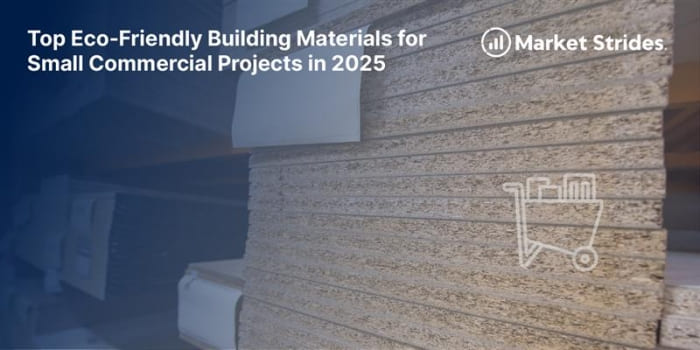Top Sustainable Construction Materials for Small Commercial Buildings in 2025

Top Eco-Friendly Building Materials for Small Commercial Projects in 2025
As the construction industry continues to evolve, eco-friendly building materials are no longer a luxury they’re a necessity. In 2025, sustainability, cost-efficiency, and performance are driving material choices, especially for small commercial projects like retail outlets, offices, cafes, and community spaces.
Whether you're a contractor, architect, or developer, using the right green materials not only reduces environmental impact but also enhances energy efficiency and long-term savings.
Here’s a list of the top eco-friendly materials making waves in 2025 for small-scale commercial construction.
1. Cross-Laminated Timber (CLT)
CLT is gaining widespread traction in small commercial construction due to its strength, sustainability, and speed of installation. Made from layers of timber glued together in a cross-grain pattern, it’s a renewable alternative to concrete or steel.
-
Why it’s eco-friendly: Made from sustainably harvested wood, stores carbon.
-
Best used for: Floors, walls, and structural frames in retail or office spaces.
2. Hempcrete
Made from the woody core of hemp plants mixed with lime, hempcrete is lightweight, breathable, and excellent for thermal regulation.
-
Why it’s eco-friendly: Renewable, non-toxic, and absorbs more CO₂ than it emits during production.
-
Best used for: Wall infill and insulation in small, low-rise commercial buildings.
3. Reclaimed Wood
Using reclaimed or salvaged wood from old barns, factories, or even shipping pallets gives new life to aged materials while reducing the demand for virgin timber.
-
Why it’s eco-friendly: Diverts waste from landfills and reduces deforestation.
-
Best used for: Interior walls, flooring, furniture, and decorative finishes.
4. Recycled Steel
Recycled steel is both durable and versatile, offering a strong foundation for framing without depleting natural resources.
-
Why it’s eco-friendly: 100% recyclable and reduces mining waste and carbon emissions.
-
Best used for: Structural frameworks, roofing, and load-bearing elements in modular commercial spaces.
5. Low-VOC Paints and Finishes
Volatile Organic Compounds (VOCs) in paints can be harmful to both people and the environment. In 2025, low-VOC or VOC-free coatings are the norm in sustainable construction.
-
Why it’s eco-friendly: Improves indoor air quality and reduces toxic emissions.
-
Best used for: Interior and exterior surfaces across all commercial environments.
6. Recycled Concrete Aggregate (RCA)
This material reuses crushed concrete from demolition projects and turns it into a new aggregate mix for foundations and sub-base layers.
-
Why it’s eco-friendly: Reduces construction waste and carbon-intensive cement demand.
-
Best used for: Sidewalks, driveways, and load-bearing foundations.
7. Cork Panels and Flooring
Cork is harvested from the bark of cork oak trees without cutting them down, making it a renewable and biodegradable material.
-
Why it’s eco-friendly: Rapidly renewable, antimicrobial, and sound-absorbing.
-
Best used for: Flooring in retail or hospitality spaces, wall coverings for acoustic control.
8. Structural Insulated Panels (SIPs)
SIPs are prefabricated panels with foam insulation sandwiched between two structural boards. They’re energy-efficient and quick to install.
-
Why it’s eco-friendly: Reduces on-site waste and improves thermal performance.
-
Best used for: Small commercial offices, pop-up shops, or modular construction projects.
Why Eco-Friendly Materials Matter in 2025
-
Regulatory Compliance: Many regions are enforcing green building codes.
-
Lower Long-Term Costs: Reduced utility bills and maintenance.
-
Brand Value: Clients and communities increasingly support sustainable businesses.
-
LEED & Green Certification: Eco-materials contribute to credits and recognition.
Final Thoughts
For small commercial projects in 2025, eco-conscious building doesn’t have to mean high costs or compromise. From hempcrete and CLT to recycled steel and SIPs, the modern market offers a range of materials that are both planet-friendly and project-efficient.
By choosing these sustainable materials, builders not only contribute to a greener future but also gain competitive advantage in a market that values both innovation and responsibility.